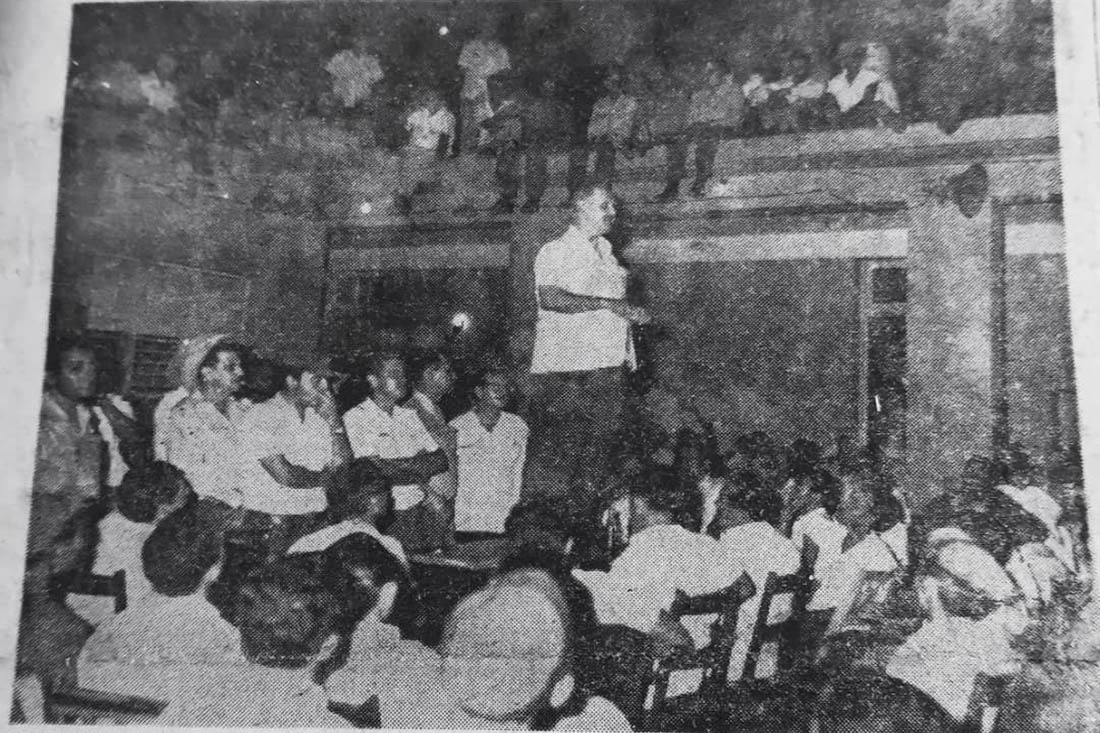The revolutionary victory led to the application of various actions to comply with the problems set forth in Fidel Castro’s historic claim of self-defense during the trials for the Assault on the Moncada Barracks in 1953, later known as the Moncada Program.
Among the most important measures are the Agrarian Reform Laws, the first signed in 1959. In Camagüey, an area of vast plains, with an extensive cattle ranching tradition, the results were more favorable. In this sense, the producers of this line were allowed, in accordance with the provisions of article 2B of the Law, to keep a greater amount of land in correspondence to the type of cattle, birth rate and feeding regime.
However, the situation is taken advantage of by some ranchers who try to hinder the process, with the result of a slow application of the Agrarian Reform in the province, a condition that determined the intervention of all the farms of more than 100 caballerias and establishing measures of protection for medium and small ranchers.
On the other hand, four years after the first Agrarian Reform Law, on October 3rd, 1963, it was decided to apply the Second Agrarian Reform Law. In the region of Camagüey, its preparations and application coincide with the passage of one of the climatological phenomena that caused the greatest disasters in the country: Cyclone Flora.
In the midst of adverse natural circumstances, Commander Ernesto Che Guevara, Minister of Industry, visits the region on October 8th to verify the damage caused by Hurricane Flora and the application of the new Agrarian Reform Law. His presence at the Panama plant is remembered by several workers in the area.
In the popular memory of many Camagüeyan farmers is the presence of militiamen, who in fulfillment of their roles as interveners, shared the hazards of a cyclone with numerous rural families; because the Second Law of Agrarian Reform, had as its fundamental objective, to intervene the farms that exceeded five caballerías of land.
As of October 1963, with the new law, the National Institute of Agrarian Reform, INRA, chaired by Dr. Carlos Rafael Rodríguez, changes its structure. The farms of the town, the state farms and the sugarcane farms are merged, creating the Agricultural Associations that attend to the sugarcane, livestock and agricultural production; among other significant transformations.
The most notable results in the province of Camagüey were the elimination of the latifundium and its conversion into areas of varied production, the emergence of the Dairy Triangle in Camagüey and the Ceba Rectangle in the Guáimaro region, the creation of some industries linked to agricultural production such as the barbed wire factory in Nuevitas and the exploitation of bat guano deposits in Sierra de Cubitas.
The year 1965 was named the year of the Agrarian Reform. A decade later, Camagüey created the livestock groups, Triangle No. 1, Triangle No. 2, Triangle No. 3 and Triangle No. 4; in the municipalities of Jimaguayú and Sibanicú. During the country’s institutionalization process, the Ministry of Agriculture was created in 1976.
Translated by: Aileen Álvarez García






